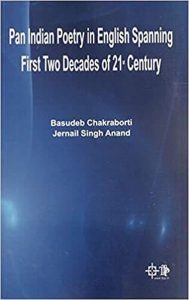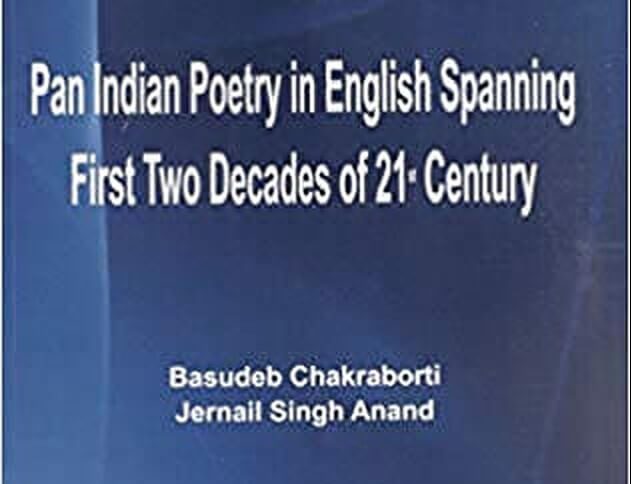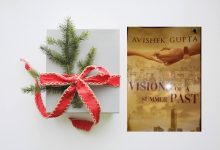Now, as we move into the third decade of the new millennium, it seems appropriate to take a look at the way poetry has responded to the changing times, opines Jaya Chadha. An exclusive for Different Truths.
 Book: Pan Indian Poetry in English Spanning First Two Decades of 21st Century
Book: Pan Indian Poetry in English Spanning First Two Decades of 21st Century
Editors: Basudeb Chakraborti & Jernail Singh Anand
Publishers: T.T.P.P, New Delhi
Price: Rs. 459, $30.00
The anthology is an appreciable attempt to take a look at the directions that Indian poetry in English is taking.
Words strung together sometimes in lyrical snatches, sometimes in spacious narratives but always moving, always inviting the reader to drift into the world as the poet sees it – that is how poetry feels and that is how this anthology feels. The world was once a place to take stock of in centuries, then it gathered momentum and moved faster and faster and changes over decades became noticeable. Now, as we move into the third decade of the new millennium, it seems appropriate to take a look at the way poetry has responded to the changing times. The anthology is an appreciable attempt to take a look at the directions that Indian poetry in English is taking.
The anthology includes works of some of the most notable poets from many parts of the country. The editors had the set the framework of including at least one poet from each state of the country and the result is an exhaustive collection with fifty two poets contributing two to three poems each. The anthology is suggested as a useful resource for courses across the departments teaching Contemporary Indian Literature in English courses. Selections could be made for the purpose from the collection but the time frame within which the poems are selected means some representative works of the best poets will have to be given a miss.
The poems cover a wide range of moods and themes that will make a layman’s reading of the collection an stimulating activity.
The poems cover a wide range of moods and themes that will make a layman’s reading of the collection an stimulating activity. The first editor Basudeb Chakraborti, in his introduction proposes a valid change in nomenclature for the literatures of the region. He proposes that instead of calling them as Punjabi literature or Tamil Literature or Marathi literature we can call them Indian Literature in Punjabi or Indian literature in Tamil or Indian Literature in Marathi. He suggests that this will give a more pan Indian Identity to these literatures underlining the Pluralism at the core of the values of the land.
The Introduction by Jernail Singh Anand gives a brief introduction to the works of each of the poets included in the anthology. They give a lead to interpret the poems and also help in tracking the thematic links in the anthology. It is a useful tool for the scholars using the anthology for academic purpose.
Several remarkable contributions are included in the anthology from Mona Zote, Mamang Dai Perugu Ramakrishna, Eseterine Kere, K. Pankajam, Chandrakanta Murasingh, Desmond Kharmawphlang, while some strong emerging voices are also given a platform.
Several remarkable contributions are included in the anthology from Mona Zote,  Mamang Dai Perugu Ramakrishna, Eseterine Kere, K. Pankajam, Chandrakanta Murasingh, Desmond Kharmawphlang, while some strong emerging voices are also given a platform. There are some poems included in the anthology that are reminiscent of how deep the impact of the Romantics has been on Indian Poetry in English both in terms of ideas as well as subjects. These poems are more an extension of a strong strain in the Indian Poetry in English in the previous century.
Mamang Dai Perugu Ramakrishna, Eseterine Kere, K. Pankajam, Chandrakanta Murasingh, Desmond Kharmawphlang, while some strong emerging voices are also given a platform. There are some poems included in the anthology that are reminiscent of how deep the impact of the Romantics has been on Indian Poetry in English both in terms of ideas as well as subjects. These poems are more an extension of a strong strain in the Indian Poetry in English in the previous century.
But for the most part the voice that resonates through the pages is strongly Indian in tones and themes. Basudeb Chakraborti and Jernail Singh Anand made selections that reflect the long philosophic traditions of the land from the love of Krishna in Lily Swarn to the spiritual quest in Dr. Anand Kumar to the voice from the Bhagwad Gita to the message of peace in Buddhism in Kallol Choudhury. The poetry of Jernail Singh Anand plunges into longer and more philosophic exploration of questions of existence. The visual narratives of Basudeb Chkraborti try to find identity in the rich philosophic traditions of our culture. On the other hand, the poems contributed by Arindam Roy delves into the layers of passion that defines the bonds of two people and gives a completely divergent strain of poetry in English.
Photo from the Internet





 By
By
 By
By
 By
By
Hello Dr. Chadha ~
Glad to find your site and learn about the wonderful explorations including the Pan Indian poetry. Please keep me in the loop for more such gatherings and collections.
Warmest regards – Jai
Ambika